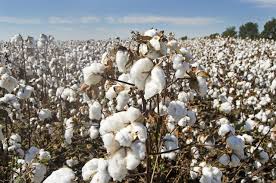Recycled Polyester Fibers: A fashion revolution from plastic waste

The fashion industry is undergoing a transformation, driven by a material reborn from plastic waste: recycled polyester fiber (rPET). This eco-friendly alternative to virgin polyester is rapidly gaining traction, fueled by a booming market and growing consumer demand for sustainable products.
Market on the rise
A recent industry report reveals a surging rPET market, valued at $12.3 billion in 2021 and projected to reach a staggering $28.3 billion by 2031. This impressive growth reflects a Compound Annual Growth Rate (CAGR) of 8.71per cent, driven by environmental concerns and a shift towards sustainable practices.
Polyester dominance and rPET's rise
Polyester reigns supreme, holding over half of the global fiber market share. However, a significant portion is transitioning towards recycled options. This trend is evident in the rising demand for rPET, with projections expecting a capture rate of at least 45per cent by 2025 and a long-term vision of reaching a remarkable 90per cent by 2030.
Table: Global rPET fiber market
|
Category |
Value |
Source |
|
|
Market Size (2021) |
$12.3 billion |
Industry Report |
|
|
Projected Market Size (2031) |
$28.3 Billion |
Industry Report |
|
|
CAGR (2021-2031) |
8.71% |
Industry Report |
|
|
Polyester Share of Global Fiber Market |
Over 50% |
Industry Report |
|
|
Projected rPET Capture Rate (2025) |
At least 45% |
Industry Report |
|
|
Long-Term rPET Capture Vision (2030) |
90% |
Industry Report |
Production powerhouse vs. consumption leaders
Asia Pacific stands out as the global leader in rPET fiber production, with China playing a major role. Brands like Patagonia and The North Face, with a strong Asian presence, are driving regional demand for rPET. However, the consumption story unfolds differently. Europe and North America are currently leading the charge in rPET fiber usage, pushed up by strong consumer awareness and government regulations promoting sustainability. Brands like Adidas and H&M, headquartered in Europe, have pledged to increase their use of rPET in their products.
Bridging the gap: Production vs. consumption
Despite the production surge, rPET fiber production still lags behind consumption. According to Mordor Intelligence, only around 14per cent of the global fashion industry's polyester demand was met by recycled fibers in 2022. This gap presents a significant opportunity for increased production capacity and infrastructure development.
Table: rPET Fiber Production and Consumption
|
Region |
Production Leader |
Consumption Leader |
Reason for Consumption Lead |
|
Asia Pacific |
China |
Europe & North America |
Strong consumer awareness and government regulations |
|
Examples (Brands) |
Adidas, H&M |
European Headquarters |
Industry embraces sustainability
Leading fashion brands are taking concrete steps towards sustainability. Patagonia, a renowned outdoor apparel company, has pledged to eliminate virgin polyester by 2025, heavily relying on rPET for its clothing lines. Similarly, Adidas, a sportswear giant, aims to use recycled polyester in all its products by 2024. These commitments showcase the industry's growing dedication to environmental responsibility.
The rPET market isn't without its hurdles. Inefficient collection and sorting of plastic waste for recycling remain a challenge, especially in developing countries. Additionally, scaling up production of high-quality rPET fibers requires further technological advancements. To overcome these obstacles, strategic initiatives are crucial. Investments in improved waste management infrastructure and advancements in recycling processes are essential. Promoting a "circular economy" where used textiles are recycled back into new fibers is another key solution.
A sustainable future for fashion
The rPET fiber market presents a promising future for the fashion industry. Driven by environmental concerns and consumer preferences, rPET offers a sustainable alternative with immense potential. As production capacities increase, costs decrease, and infrastructure improves, rPET has the power to revolutionize the textile industry, leaving a smaller footprint on our planet.

